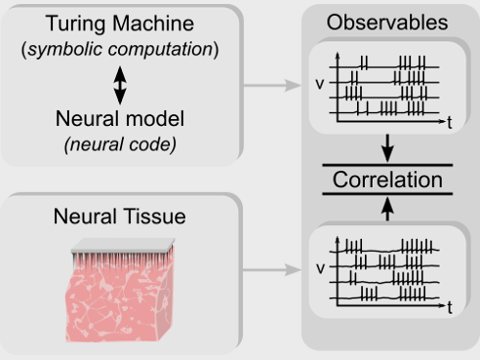Neural Turing Computation
The study of Turing Computation in Neural models is one of my main research focuses.
The brain is often likened, both in popular culture and in academic circles, to a digital computer, that is a machine which manipulates symbols according to some set of rules. The brain-computer metaphor has shaped our scientific discourse and research actions for decades now, but there’s still no satisfying answer to the question:
How does the brain carry out symbolic computation?
Whole scientific fields are dedicated to tackling this question, and while progress is being made, we are still very far from unveiling anything resembling an answer.
Yet, there is a similar question which, answered, promises equally great rewards:
How could the brain carry out symbolic computation?
 That is, given the best models we have for the brain, can we come up with possible mechanisms by which those models can implement symbolic computation?
That is, given the best models we have for the brain, can we come up with possible mechanisms by which those models can implement symbolic computation?
In my research, I focus on the mapping between symbolic models of computation (such as Turing Machines) and Neural models, to unveil these mechanisms and study their characteristics, as exemplified by the figure.
The right mappings between models of symbolic computation and Neural models are of great theoretical and practical relevance. In fact, the industry is increasingly harnessing the power of Neural and Neuronal Networks, in software and – recently – in hardware implementations. In this context, the possibility to use such models to learn full-fledged algorithmic tasks and to retrieve the learned symbolic rules from their parameters promises an immense impact.